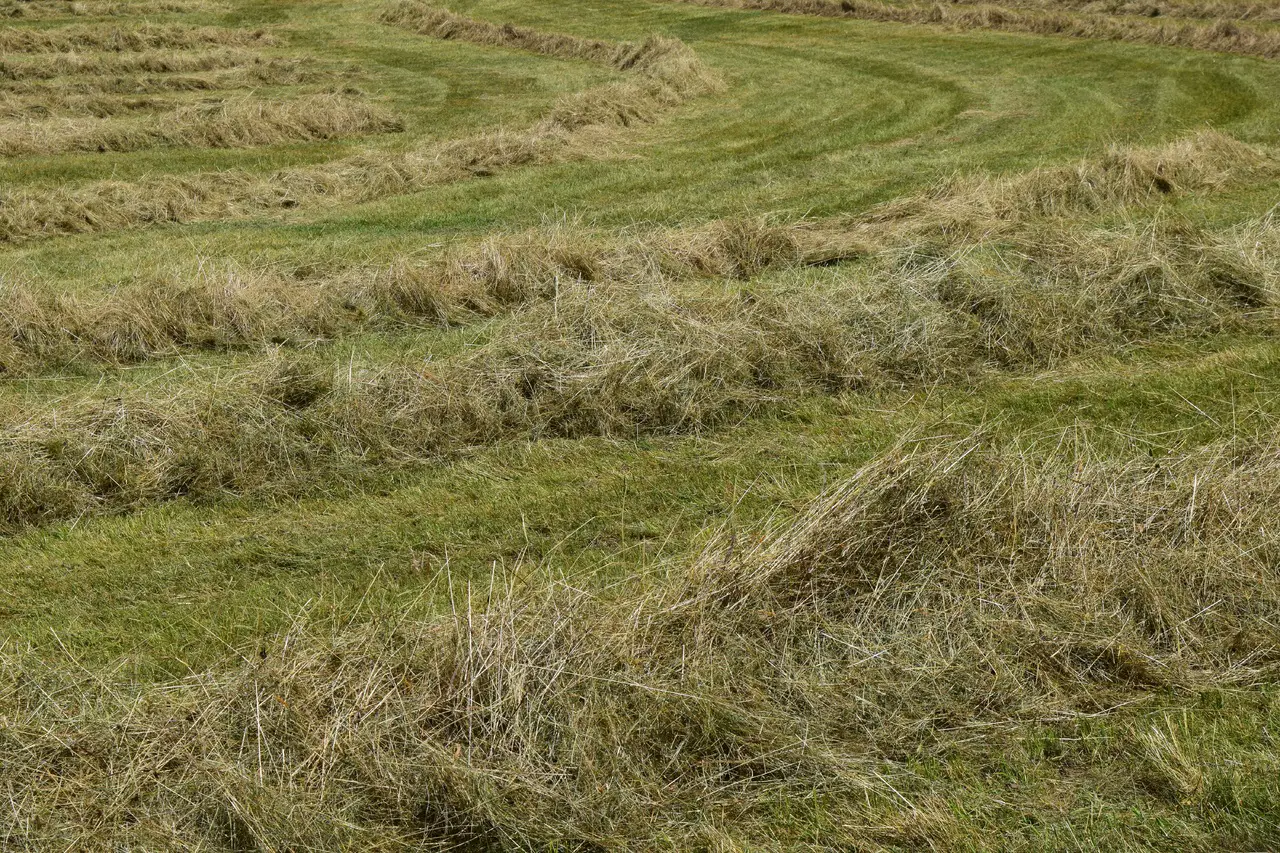Yes, you can use grass clippings to generate compost. Grass clippings easily compress when placed in a mound. When adding them, be careful not to cram them into your pile. Too thick layers won't decompose effectively and can smell bad.
You should be fine, provided you’re careful about how many grass trimmings you put in your pile at once and the carbon to nitrogen ratio.
Table of Contents
Are Herbicides a Concern?
It’s safe to put plant material exposed to pesticides approved for home use. Spray-on insecticides degrade quickly in the presence of light.
Also, you can use the plant material in your compost heap one week after treatment.
You should keep fungicide-treated grass clippings away from the compost pile for a minimum of a week.
How Long Does It Take for Grass Clippings to Decompose?
After mowing, grass clippings typically decay in 3 to 4 weeks.
Grass clippings put into compost will entirely decompose in 1 to 3 months.
Are Grass Clippings Green or Brown Material?
Newly cut grass is a green material. As stated earlier, a compost pile requires a good mix of green and brown materials to disintegrate effectively.
Therefore, you need to add browns like sawdust, wood chips, or dry leaves if you plan to compost newly cut grass.
However, if you wait for the grass clippings to dry before throwing them into the composter, they will be classified as brown material.
Composting Your Grass Clippings
You can compost grass clippings in various ways to improve your garden soil.
1. Pile Composting
If you cannot remove your lawn mower’s bagging attachment or dislike the appearance of freshly cut grass clippings on your lawn, you can compost them.
Finding a location outside your home is the first step to starting a compost pile. That is a great, no-frills approach to compost for people with enough space.
The size of a compost pile must be 4 square feet and above. Anything smaller requires more time for your compost to break down.
2. Trench Composting
Trench composting requires burying food leftovers and carbon-rich materials in your garden trench.
It allows you to compost items like cooked and dairy foods and meat without being concerned about luring unwanted vermin. Provided the garden does not contain edible plants, you can also compost pet waste in the trench.
Once the trench is full, mulch it with the remaining grass clippings to hold everything in place.
Here’s how you can make your trench compost:
* Dig an 18 to a 24-inch deep hole. The hole size is up to you, but a shovel’s blade width is often ideal.
* Food scraps and other damp organic matter should fill the hole to a depth of 6 inches.
* Put soil in the trench, at least 12 to 18 inches deep, and cover it.
* Add a layer of soil amendments on top.
3. Container Composting
Container composting is mixing grass clippings with organic materials in a compost bin or compost tumbler, which you can purchase on Amazon, stirring the materials frequently, and waiting, just like pile composting.
That is the ideal choice for homeowners who have limited yard space.
How Can You Make Grass Clippings Decompose More Quickly?
Having your lawn dethatched will hasten the breakdown of the grass clippings.
Thatch is a layer of grass stems, runners, and roots that functions as a boundary between the soil and growing grass.
When the thatch is thicker than 1 cm or half an inch, it keeps grass clippings from getting to the soil and also the soil microorganisms or microbes from decomposing the clippings.
- Too much thatch impedes the decomposition of grass clippings.
- To enhance the breakdown of grass clippings, dethatch when the thatch layer is thicker than half an inch.
- Grass clippings decompose more quickly in warm, humid weather.
- During the growth season, water your grass frequently to hasten the decomposition process.
Moisture and heat trigger the decomposition of grass clippings. Although you cannot adjust the yard’s temperature, adding water can suffice.
During the planting period, irrigation your lawn thoroughly twice a week promotes a healthy yard and speeds up the decomposition of fresh grass clippings you’ve left on your lawn.
Alternatives to Composting
Consider the following options rather than disposing of the grass trimmings in a landfill:
1. Grasscycling
The simplest way to use your grass clippings is to leave them on the lawn once you’re mowing.
Because grass clippings are so small, they can decay without building up and producing thatch.
Grasscycling will save you 30% to 38% of your mowing time because you won’t worry about collecting and transferring grass clippings.
2. Mulching
Another simple method for getting rid of grass clippings is to mulch them. This method works better for those with lawn mowers that have bagging attachments.
Mulching provides several advantages:
- Controls the soil temperature
- Preserves moisture
- Minimizes weed growth
- Stops soil erosion
Here’s how mulching works:
- Allow the trimmings to dry. The soil will become matted and clogged with wet grass clippings, making it difficult for plant roots to absorb oxygen and minerals.
- In your garden bed, scatter a thin layer of grass trimmings about one to two inches thick all around the plants.
- As they break down, add more grass clippings.

